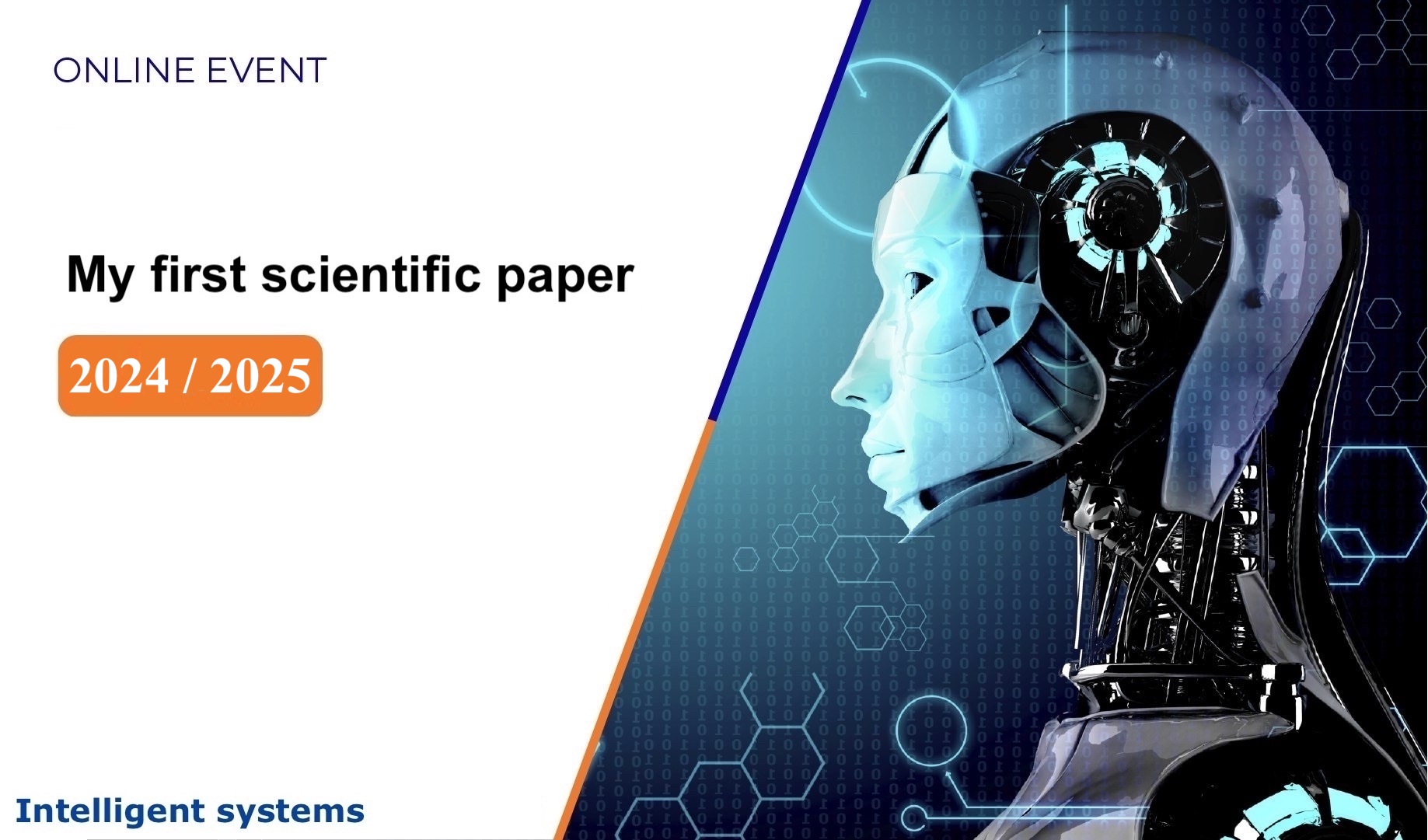Difference between revisions of "Main Page"
| (56 intermediate revisions by one other user not shown) | |||
| Line 1: | Line 1: | ||
| − | [[File: | + | {{#seo: |
| + | |title=Research management course | ||
| + | |titlemode=append | ||
| + | |keywords=Research management course | ||
| + | |description=This research management course immerses students in research activities that produce scientific papers. | ||
| + | }} | ||
| + | [[File:Miai_logo1.jpeg|class=img-responsive|left|alt Maths&AI MIPT-UGA student workshop]] | ||
{{Box|Title=News and announcements|Content={{News}}<!--''[[News|more]]''-->}} | {{Box|Title=News and announcements|Content={{News}}<!--''[[News|more]]''-->}} | ||
| − | This course produces student research papers. It gathers research teams | + | ===Course progress=== |
| − | + | This course produces student research papers. It gathers research teams. Each team joins a student, a consultant, and an expert. The student is a project driver who wants to plunge into scientific research activities. The graduate student consultant conducts the research and helps the student. The expert, a professor, states the problem and enlightens the road to the goal. The projects start in February and end in May, according to the [[Course schedule|schedule]]. | |
| − | |||
| − | |||
| − | |||
*[[Course schedule]] | *[[Course schedule]] | ||
*[[Week 0|Week 0: Come in]] | *[[Week 0|Week 0: Come in]] | ||
| + | ** [https://forms.gle/hFiu8j3fHF9hdZkN8 Questionnaire 0] | ||
| + | ** [https://docs.google.com/document/d/1cESrKzU_kTL1PeRNhkQ1glzjbGh3VLw7Cbt34O19NGQ/edit?usp=sharing Scenario] | ||
*[[Week 1|Week 1: Set the toolbox]] | *[[Week 1|Week 1: Set the toolbox]] | ||
*[[Week 2|Week 2: Select your project and tell about it]] | *[[Week 2|Week 2: Select your project and tell about it]] | ||
| Line 22: | Line 27: | ||
*[[Week 11|Week 11: Prepare your presentation]] | *[[Week 11|Week 11: Prepare your presentation]] | ||
*[http://www.youtube.com/watch?v=xW_lXGn1WHs Week 12: Show your results (Youtube)] | *[http://www.youtube.com/watch?v=xW_lXGn1WHs Week 12: Show your results (Youtube)] | ||
| − | |||
| − | |||
| − | |||
| − | |||
| − | |||
| − | |||
| − | |||
| − | |||
| − | |||
| − | |||
| − | |||
| − | |||
| − | |||
| − | ==Links== | + | ===Links=== |
| + | *2023 problems [https://github.com/intsystems/m1p/blob/main-2023/problem_list.md GitHub] | ||
| + | *2022 results [https://github.com/Intelligent-Systems-Phystech/m1p_2022 GitHub] | ||
*Telegram: [https://t.me/m1p_org discussion] <b> Ask here! </b> | *Telegram: [https://t.me/m1p_org discussion] <b> Ask here! </b> | ||
*The meeting room: [https://m1p.org/go_zoom m1p.org/go_zoom] | *The meeting room: [https://m1p.org/go_zoom m1p.org/go_zoom] | ||
| − | *More courses from the [ | + | *More courses from the [http://m1p.org/is Intelligent Systems] |
<!-- | <!-- | ||
*Check-1 and check-2 sing-in: [https://docs.google.com/spreadsheets/d/1g9ud_qyHJIkzHYWFRac_WmeVZ7Qv11N_OIXAzK5iOs0/edit#gid=298225191 table] | *Check-1 and check-2 sing-in: [https://docs.google.com/spreadsheets/d/1g9ud_qyHJIkzHYWFRac_WmeVZ7Qv11N_OIXAzK5iOs0/edit#gid=298225191 table] | ||
| Line 52: | Line 46: | ||
--> | --> | ||
| − | == History | + | ===History=== |
* [http://www.machinelearning.ru/wiki/index.php?title=M1 Main page with old homework] | * [http://www.machinelearning.ru/wiki/index.php?title=M1 Main page with old homework] | ||
* [http://bit.ly/m1p_2020 Group 674, 694, spring 2020] | * [http://bit.ly/m1p_2020 Group 674, 694, spring 2020] | ||
* [http://bit.ly/M1_2019_674 Group 674, spring 2019] | * [http://bit.ly/M1_2019_674 Group 674, spring 2019] | ||
* [http://bit.ly/M1_2019_694 Group 694, spring 2019] | * [http://bit.ly/M1_2019_694 Group 694, spring 2019] | ||
| + | |||
| + | ==Mathematical methods of forecasting, 2024== | ||
| + | |||
| + | This course delivers methods of model selection in machine learning and forecasting. The modeling data are videos, audios, encephalograms, fMRIs, and other measurements in natural science. The models are linear, tensor, deep neural networks, and neural ODEs. The practical ''examples'' are brain-computer interfaces, weather forecasting, and various spatial-time series forecasting. The ''lab works'' are organized as paper-with-code reports. [[Mathematical forecasting|See course page]] | ||
| + | |||
<!--*[http://bit.ly/m1p_file2discuss Upload a file to discussion] | <!--*[http://bit.ly/m1p_file2discuss Upload a file to discussion] | ||
Latest revision as of 03:37, 7 February 2024
Fall 2025 — Functional Data Analysis starts soon
Before 13 February 2026 — My first scientific paper: Suggest your project here
On Thursdays at 17:50 — Class m1p.org/go_zoom and discussion channel t.me
See results of 2024 — on GitHub
Course progress
This course produces student research papers. It gathers research teams. Each team joins a student, a consultant, and an expert. The student is a project driver who wants to plunge into scientific research activities. The graduate student consultant conducts the research and helps the student. The expert, a professor, states the problem and enlightens the road to the goal. The projects start in February and end in May, according to the schedule.
- Course schedule
- Week 0: Come in
- Week 1: Set the toolbox
- Week 2: Select your project and tell about it
- Week 3: State your problem
- Week 4: Plan the experiment
- Week 5: Visualise the principle
- Week 6: Write the theory
- Week 7: Analyse the error
- Week 8: Construct your paper
- Week 9: Review a paper
- Week 10: Select a journal to submit
- Week 11: Prepare your presentation
- Week 12: Show your results (Youtube)
Links
- 2023 problems GitHub
- 2022 results GitHub
- Telegram: discussion Ask here!
- The meeting room: m1p.org/go_zoom
- More courses from the Intelligent Systems
History
- Main page with old homework
- Group 674, 694, spring 2020
- Group 674, spring 2019
- Group 694, spring 2019
Mathematical methods of forecasting, 2024
This course delivers methods of model selection in machine learning and forecasting. The modeling data are videos, audios, encephalograms, fMRIs, and other measurements in natural science. The models are linear, tensor, deep neural networks, and neural ODEs. The practical examples are brain-computer interfaces, weather forecasting, and various spatial-time series forecasting. The lab works are organized as paper-with-code reports. See course page
